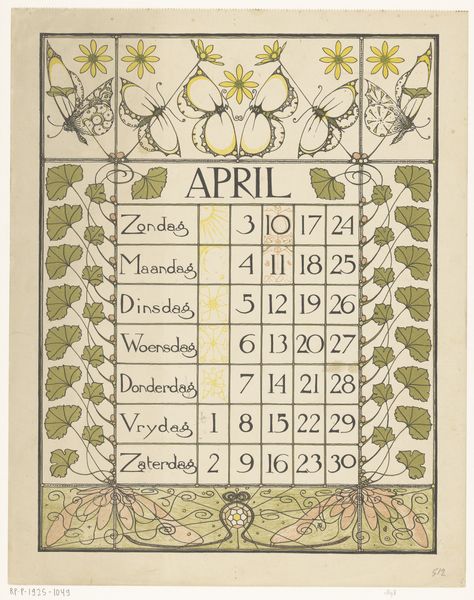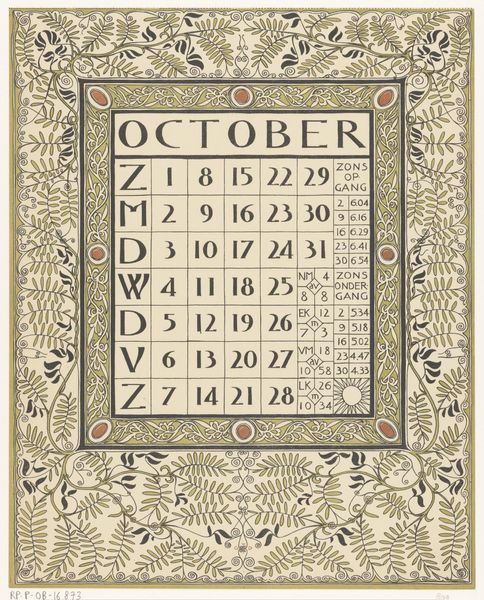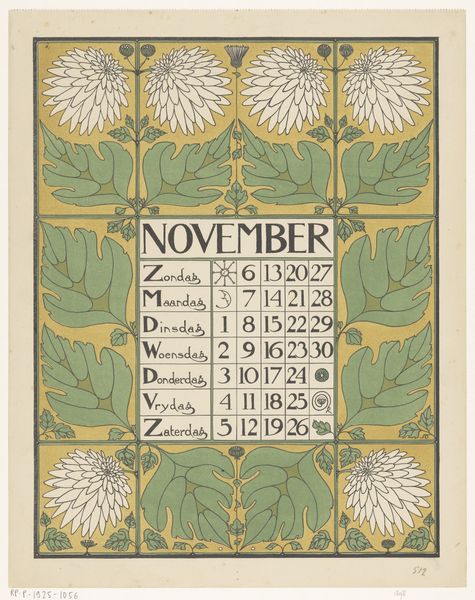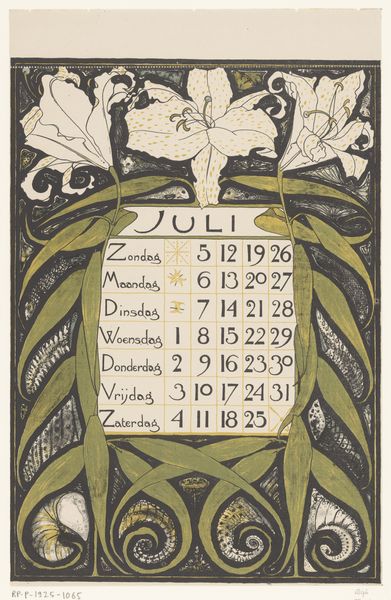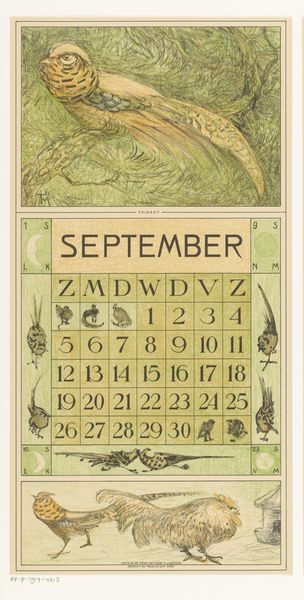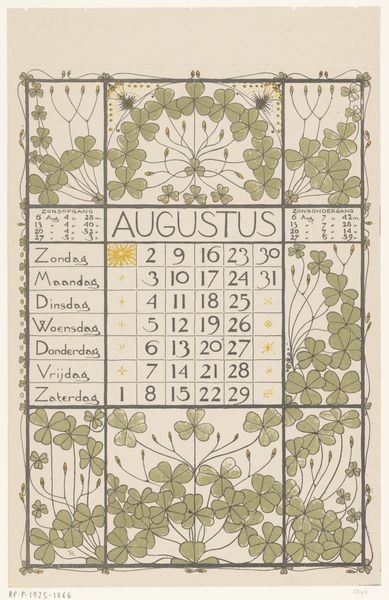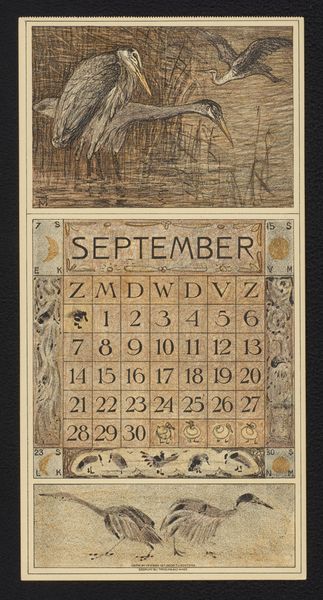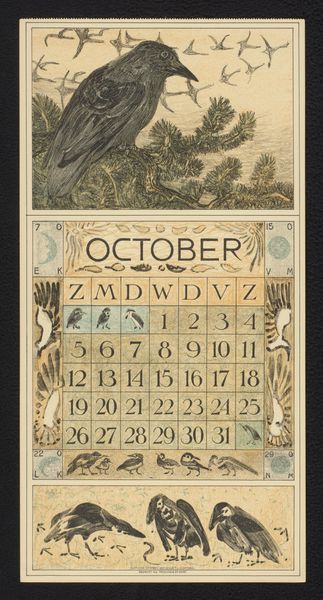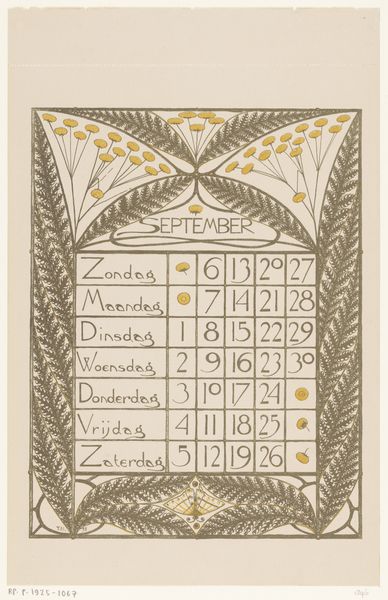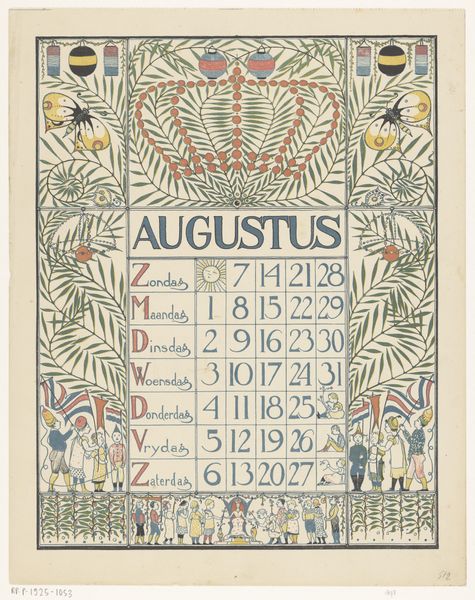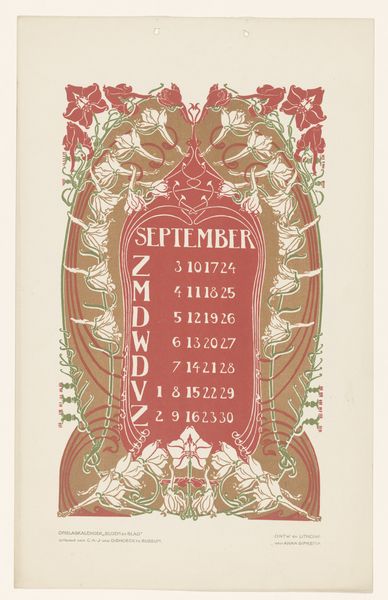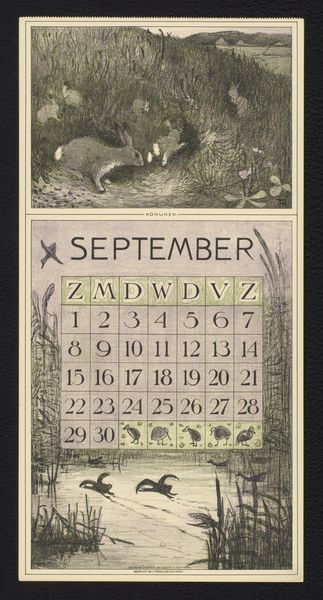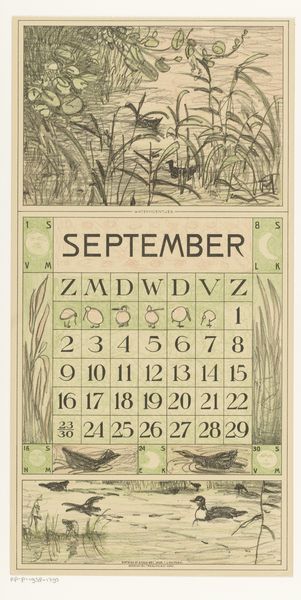
graphic-art, print, textile, poster
#
graphic-art
#
aged paper
#
toned paper
#
art-nouveau
# print
#
pattern
#
old engraving style
#
textile
#
flower
#
wood background
#
pattern background
#
fabric design
#
pattern repetition
#
textile design
#
decorative-art
#
layered pattern
#
poster
#
coloring book page
Dimensions: height 357 mm, width 284 mm
Copyright: Rijks Museum: Open Domain
Curator: Here we have "Kalenderblad voor september 1898" a calendar page designed around 1897 by Theo Nieuwenhuis, part of the Rijksmuseum collection. It exemplifies the decorative arts through printmaking and textile design influences. What strikes you initially? Editor: It's immediately soothing, a breath of late-summer calm. The patterns and muted greens layered upon this toned paper… it feels like holding a fragment of an antique textile, a lovely artifact from a forgotten time. Curator: It's definitely a hallmark of Art Nouveau, drawing from natural forms. Consider the flower arrangement above the month title, which stylistically frames the grid of dates. Think of how radical such a move was at the end of the 19th century—inserting beauty and the organic into the rigid, utilitarian form of a calendar. Editor: Utilitarian, yes, but Nieuwenhuis elevates it. I imagine flipping through this each day, September of 1898... there is a cross by the 24th. Something to mark? It’s odd to be privy to such a private moment from all this time removed. What does it mean that the maker cared enough about its beauty and that it can still inspire these ruminations centuries later? Curator: That points directly at how art functions within social practice. Calendars weren’t just about dates, they were cultural objects expressing the aesthetic values of the period. The emphasis on decorative arts and accessible design reveals the ethos of the Arts and Crafts movement. This ethos valued democratizing access to beauty. Editor: So, it is design with intent! More than "calendar" it also stands as art, a document reflecting values, social concerns, the hopes of beauty democratized! I must consider my to do list a higher calling now! Curator: Precisely, so as we move onward from Nieuwenhuis, consider that the public role of design and artwork can reflect an ethos beyond the simple act of art. Editor: Food for thought for sure! Time to keep designing and keep contemplating the value of a simple pretty object.
Comments
No comments
Be the first to comment and join the conversation on the ultimate creative platform.
